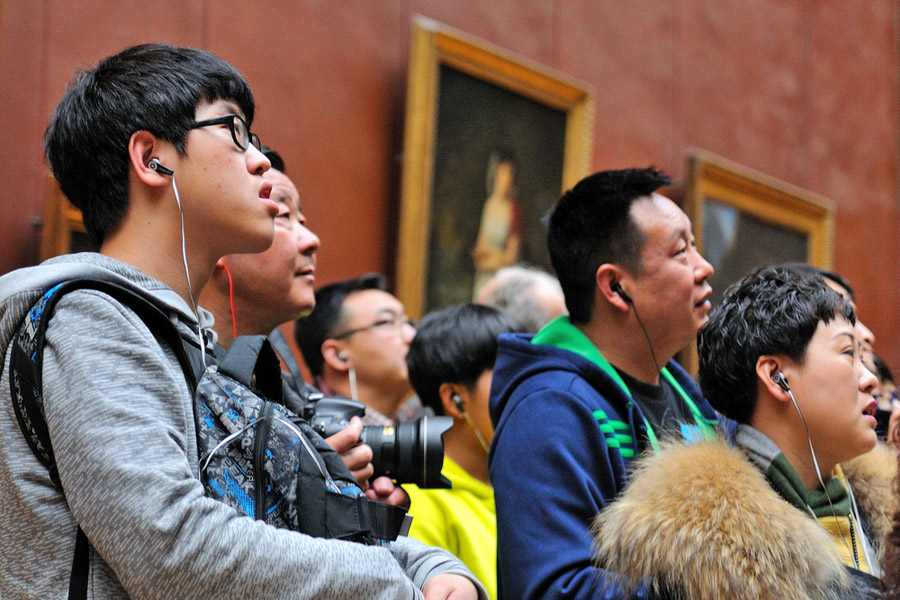Are the leading museums doing enough to understand the customer experience they offer? In this article, I have looked at the use of Big Data to understand visitor expectations better and increase satisfaction. Even without Big Data, it is possible to have a better understanding of one’s “customers”. Proof of this today with qualitative research on Chinese tourists at the Palace of Versailles.
If you only have 30 seconds
- Cultural institutions have a lot to gain from studying the expectations of their visitors through qualitative research.
- The qualitative methodology implemented for the study of Chinese tourists combines several techniques: interviews based on a questionnaire, on-participatory observations, exit interviews to confirm these observations.
- The qualitative approach provides a more nuanced insight into the expectations and behaviour of Chinese tourists in France’s cultural hotspots.
Introduction
In her research, Isabelle Brianso describes well the paradox of the image of the Chinese tourist in France. As the leading visitors to the Château de Versailles (11% of visits) and the Louvre’s second-largest foreign clientele (behind the Americans), the Chinese are an essential source of income for France. Still, they are perceived as a nuisance by other visitors.
Rare are those who conduct qualitative research in their exhibition spaces to explore the expectations of their visitors.
Thanks to a qualitative in-situ approach, the author of the research published in 2017 wanted to overcome the negative clichés conveyed about Chinese tourists:
A certain number of stereotypes are regularly ” pinned on ” Chinese tourists, who are said to be uncultured and somewhat rude. According to popular belief, Chinese tourists only travel in groups, give priority to visiting the Louvre or Versailles, and eat exclusively in Asian restaurants throughout their European cultural tour.
The research was carried out in situ, at the Château de Versailles, in direct contact with Chinese tourists.
This research is also an excellent example of the combination of different qualitative techniques to capture the reality of a situation. To understand the reality of the Chinese tourist in France, 2 approaches were combined:
- individual face-to-face interviews based on a questionnaire
- non-participatory observations of the tourists in the History Gallery of the Palace of Versailles
The analysis of data collected this way enabled the researchers to reconstruct a “customer experience” in 3 stages: before the visit, during, after. This reading scheme proves to be very useful and is similar to the “customer experience wheel” that we often use for our analyses (click here to download it from our “resources” page).
Face-to-face qualitative interviews
An initial qualitative survey was carried out “face-to-face” by three interviewers of Chinese and Sinophone origin on a sample of 283 people. Respondents were selected based on age (>15 years), language spoken and nationality. Also, a balance was sought between tourists travelling alone and those travelling in groups.
Remarks + exit interviews
To complete the qualitative interviews, a follow-up of fifty-three Chinese visitors was carried out. This technique is also called “shadowing” and consists of following (without being spotted) customers to observe their behaviour. The distance allows us not to influence the actions of the customers. This is called non-participatory observation. This “discreet” monitoring, as described by the author, was aimed at “observing the circulation of visitors in the museum space (flow, point of acceleration or deceleration, use of the various mediation media)”. To complete the observations made, individual interviews of the 53 Chinese visitors completed the process.

Conclusions: who really is the Chinese tourist at the Palace of Versailles?
The conclusions of the research help to nuance the stereotypes conveyed about Chinese tourists:
- the Chinese tourist is well informed before visiting the Palace of Versailles. The Chinese are themselves steeped in romantic ideals, of which the Palace of Versailles is a materialisation.
- The stereotypes that follow Chinese tourists (and which were, as Isabelle Brianso points out, the same for Japanese tourists at another time) stem from the dynamics of visiting hyper-frequented places. As she writes, “nothing differentiates the Chinese tourist from another tourist when he visits a hyper-frequented heritage site in the Ile-de-France region, such as the Eiffel Tower or the Palace of Versailles”.
- A visit to the high points of French history gives Chinese tourists a social influence that is reflected in the luxury souvenirs and photos they take back to China. The prestige of French history, therefore, tends to reflect on the Chinese visitor through these elements of demonstration which characterise French exoticism and romanticism.
As is often the case with qualitative research, the depth of the analysis and the richness of the points of view makes it possible to go beyond quantitative assessments.
This leads Isabelle Brianso to say that qualitative methodologies should be used more in the cultural sector:
The museums and tourist attractions in the Paris Region […] are seeing more figures than they are studying the mass arrival of Chinese visitors. Few of them conduct qualitative studies in their exhibition spaces to explore the expectations of their audiences, particularly those related to digital practices.
References
Illustration images: shutterstock
Posted in Misc., Research.

